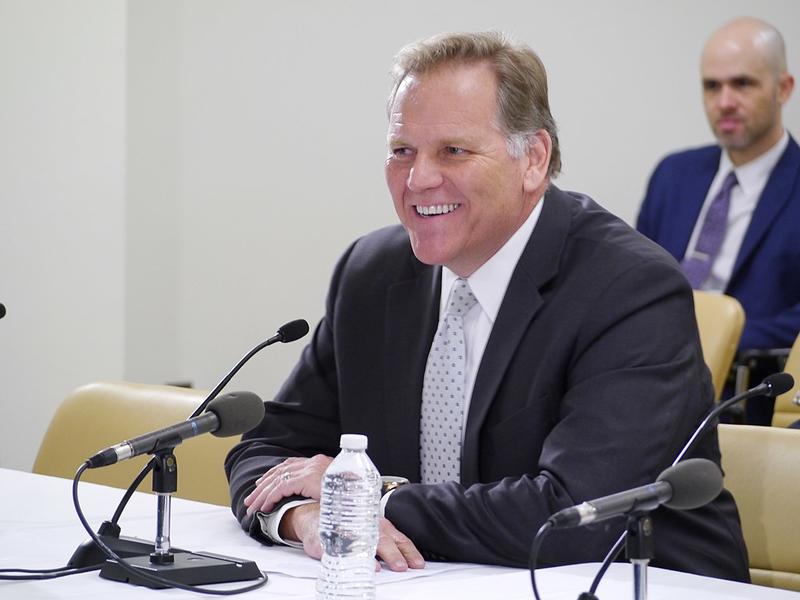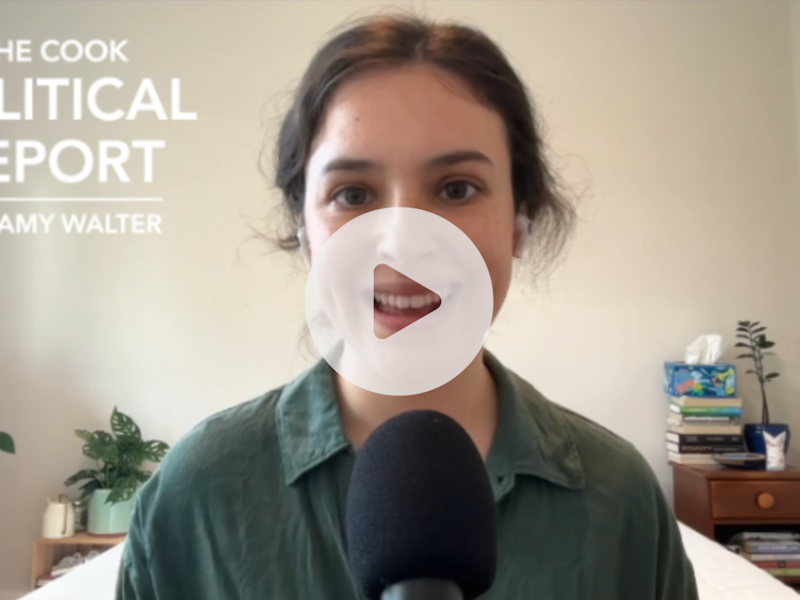
Business, community, and government leaders are growing increasingly alarmed that the populist and ideologically conservative House Republicans may endanger Congress’ ability to approve an increase in the federal debt ceiling, a move crucial to avoiding the nation’s first-ever default and a calamity in the financial markets.
The federal public debt ceiling has been either raised or suspended about a dozen times over the last decade, often after considerable uncertainty and very messy fights. One might assume that the pending debt-limit fight will end much like others, when Congress and the president reached the precipice only to find an out at the 11th hour.
That likely will be the case this year as well. But a confluence of events increases the chances of a very different result.
Although divided government in which the president and U.S. Senate are under control of one party and the House in the grasp of another party is hardly new, the rise of a more-populist Republican Party makes the House less beholden or responsive to top business leaders. In the past, those business leaders were the staunchest, most influential advocates of Congress dealing with the debt limit in a responsible and expeditious fashion.
It was 30 years ago when the inimitable Democratic strategist James Carville, then advising first-year Democratic President Bill Clinton, said, “I used to think that if there was reincarnation, I wanted to come back as the president or the pope or as a .400 baseball hitter. But now I would like to come back as the bond market. You can intimidate everybody.”
One wonders today whether many current House Republicans are as fearful of the bond market, among the most directly affected actors in any debt-limit fight, as even Carville, Clinton, and Democrats were in 1993.
Wall Street and others in the traditional business establishment, such as the U.S. Chamber of Commerce, the National Association of Manufacturers, and CEO-oriented groups like the Business Roundtable and Business Council, have found they have less influence on this populist, nationalist, culture-war-oriented iteration of the Republican Party.
A further complication is the strained relationship between some business leaders and some Republicans in Congress. There have been times in recent years when some business leaders and organizations worked with and even supported Democrats. That did not sit well with some GOP leaders on the Hill, who saw business as an extension of the Republican Party as opposed to an independent operator. At one point, some House Republicans even suggested investigating the Chamber of Commerce, something that not that long ago Democrats might have been tempted to do.
A second factor is the increasing share of Republicans on Capitol Hill, particularly in the House, who seem to look more to the twice-nominated and once-elected former President Trump for cues and inspiration on policy, priorities, and style than to those who are their official leaders, such as House Speaker Kevin McCarthy and Senate Minority Leader Mitch McConnell.
This orientation toward a Trump-style approach stands in stark contrast to Trump’s GOP predecessors—George W. Bush, George H.W. Bush, Ronald Reagan, Gerald Ford, Richard Nixon, and Dwight Eisenhower. This Republican Party is very different from the one that solved previous debt-limit crises.
Further, the incentive structure has changed for elected officials and candidates in both major parties. Financial contributions are increasingly raised online and in small amounts, fueled by hyperbolic rhetoric, outrage, and the politics of grievance.
Far greater degrees of hyper-partisanship and increasingly audacious approaches to gerrymandering have resulted in more districts custom-designed to be either extremely Republican (and conservative) or similarly Democratic (liberal). According to The Cook Political Report with Amy Walter, the 82 current swing congressional districts, those voting for president within 5 points of the nation as a whole, make up exactly half the number of such districts that existed in 1999—164. Winning and holding onto swing districts requires the ability to win the support of independents and moderates, and when possible, defecting voters from the opposition party. The smaller number of swing districts means fewer members need to strike balances and support compromises.
Today, there are more Republican members of Congress in danger of losing a primary than a general election—hence, they are constantly looking over right shoulders. The same is true among Democrats apprehensively looking to the left. These preoccupations result in increased intransigence and fewer incentives to find consensus and compromise.
A Pew Research Center study released last year found that there are only about two dozen moderate Democrats and Republicans remaining in Congress, compared to more than 160 in 1971-1972. The increasingly ideological makeup of Congress mirrors what is happening in the country. Eight years ago, Pew found that “Republicans and Democrats are more divided along ideological lines—and partisan antipathy is deeper and more extensive—than at any point in the last two decades.” Pew went on to report that “these trends manifest themselves in myriad ways, both in politics and in everyday life.”
In addition to the narrowness of the GOP majority in the House, the circumstances around McCarthy’s election to the post of speaker, and the thin ice on which he stands, diminishes his leverage on his side of the aisle and makes him less able to persuade members to take tough votes.
Although Nancy Pelosi, McCarthy’s predecessor as speaker, had an identically sized, razor-thin majority of 222-213 (discounting vacant seats) last term, those were her 19th and 20th years as the top Democrat in the House. By contrast, McCarthy is entering just his fifth year atop the GOP conference. For all the problems Pelosi had with certain members, her conference was—and remains—less splintered than McCarthy’s.
For Senate Republicans, their ranks are down one seat from last year. McConnell lost five members to retirement who were easier for him to deal with than many of the newer GOP senators. McConnell lost team players and gained mavericks, something that tests even the wily Kentuckian.
Senate Majority Leader Chuck Schumer is now in his seventh year as the top Democrat in the upper chamber, having taken over from Harry Reid in 2017. But this will be his first as the top Democrat on the Hill, with Pelosi having played the alpha-dog role for that entire time. Schumer must obviously feel a bit better having added one seat to his previous majority. But he has no allowance for defections, not unlike McCarthy in the House.
Finally, President Biden’s efforts to get the debt ceiling increased will be more complicated with his standing potentially diminished by the discovery of a small number of classified documents from his time as vice president found in what had been his Washington think-tank offices and the garage in his home in Wilmington, Del. While the number of documents, the overall circumstances, and the potential legal jeopardy are far different in Biden's situation than in the case of the secret documents found in Trump’s Florida home, it’s hard for anyone to deny that what would normally be a heavy lift for Biden will become even heavier.
Biden’s more-challenging situation is just one more reason why this fight could be more difficult than previous debt-ceiling fights. Other “must pass” pieces of legislation may be similarly more difficult.
Later this year, Congress must approve spending bills to keep the government operating and authorize a new five-year farm bill. Failure to approve either would be a disaster for the economy.
The base case remains that Congress will eventually avoid catastrophe and, after a lot of Sturm und Drang, prevent outright default. But the certainty of such an outcome is lower than we have ever seen before.
The article was originally published for the National Journal on January 18, 2023.











Subscribe Today
Our subscribers have first access to individual race pages for each House, Senate and Governors race, which will include race ratings (each race is rated on a seven-point scale) and a narrative analysis pertaining to that race.